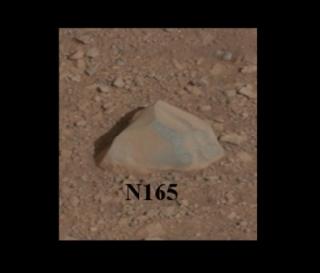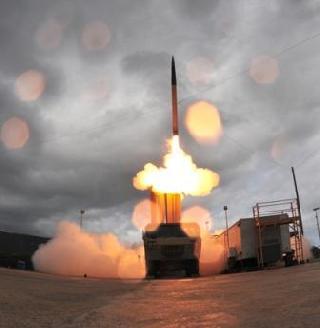
This close-up image shows the first target the Curiosity rover aims to zap with its Chemistry and Camera (ChemCam) instrument. A NASA/JPL photo
PASADENA (BNS): NASA rover Curiosity has successfully fired a powerful laser shot at a Martian rock as a "target practice" to analyze the mineral composition of the Red Planet.
The car-sized rover's Chemistry and Camera instrument, or ChemCam, fired the laser beam at a fist-sized rock called 'Coronation' with 30 pulses for a 10-second period on Sunday.
Each pulse delivers more than a million watts of power for about five one-billionths of a second. The energy from the laser excites atoms in the rock into an ionized, glowing plasma. ChemCam catches the light from that spark with a telescope and analyzes it with three spectrometers for information about what elements are in the target.
ChemCam recorded spectra from the laser-induced spark at each of the 30 pulses, NASA said.
"We got a great spectrum of Coronation -- lots of signal," said ChemCam Principal Investigator Roger Wiens of Los Alamos National Laboratory, New Mexico.
"Our team is both thrilled and working hard, looking at the results. After eight years building the instrument, it's payoff time!", the researcher added.
The technique used by ChemCam, called laser-induced breakdown spectroscopy, has been used to determine composition of targets in other extreme environments, such as inside nuclear reactors and on the sea floor, and has had experimental applications in environmental monitoring and cancer detection.
Sunday's investigation of Coronation was the first use of the technique in interplanetary exploration, NASA said.
The US-French built instrument will examine thousands of such targets on Mars in the next two years to understand the planet's geology.
Curiosity - the biggest and most sophisticated robotic explorer ever built by NASA - landed on Mars on August 6 to begin a two-year mission to hunt for signs of life that ever existed on the planet.
 Previous Article
Previous Article Next Article
Next Article













The Indian Air Force, in its flight trials evaluation report submitted before the Defence Ministry l..
view articleAn insight into the Medium Multi-Role Combat Aircraft competition...
view articleSky enthusiasts can now spot the International Space Station (ISS) commanded by Indian-American astr..
view article